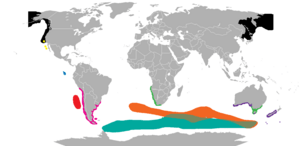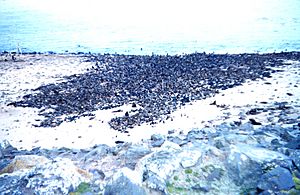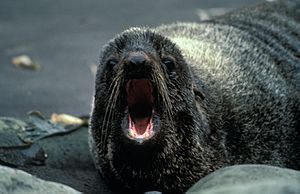Fur seal facts for kids
Quick facts for kids Fur seal |
|
|---|---|
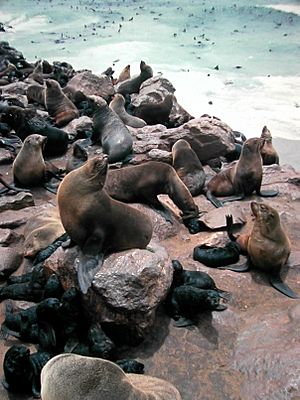 |
|
| A group of brown fur seals (Arctocephalus pusillus) | |
| Scientific classification |
|
| Kingdom: | Animalia |
| Phylum: | Chordata |
| Class: | Mammalia |
| Order: | Carnivora |
| Clade: | Pinnipedia |
| Family: | Otariidae |
| Subfamily: | Arctocephalinae Scheffer & Rice 1963 |
| Genera | |
|
Arctocephalus |
|
Fur seals are a type of pinniped, which is a group of mammals with flippers. There are nine different kinds, or species, of fur seals. They are part of a family called Otariidae, which also includes sea lions. Fur seals are much more closely related to sea lions than to true seals.
Like sea lions, fur seals have visible external ears, called pinnae. They also have strong front flippers and can walk on all four flippers on land. A special feature of fur seals is their thick, soft underfur. This fur made them a target for commercial hunting in the past. Most fur seal species live in the Southern Hemisphere, while one species, the northern fur seal, lives in the North Pacific.
Contents
What are Fur Seals?
Fur seals and sea lions belong to the same family, Otariidae. Along with other seal families, they are all pinnipeds. This means they are mammals with front and rear flippers. Scientists believe pinnipeds evolved from land mammals that were related to modern bears. This happened about 15 to 17 million years ago. These animals quickly adapted to living in the ocean, becoming the semi-aquatic mammals we see today. Fur seals and sea lions are often called "eared seals" because they have visible ears.
For a long time, all fur seals were grouped together in one subfamily because of their thick fur. However, recent genetic studies show that some fur seals are more closely related to sea lions than to other fur seals. Even so, fur seals share many common traits. These include their dense fur, generally smaller size, and longer trips to find food. They also tend to eat smaller prey and show greater differences in size between males and females. Because of these shared features, it's still helpful to think of them as a distinct group.
There are two main groups, or genera, of fur seals: Callorhinus and Arctocephalus. The Callorhinus group has only one species, the northern fur seal, found in the Northern Hemisphere. The Arctocephalus group includes eight species found in the Southern Hemisphere. These southern fur seals include the Antarctic, Galapagos, Juan Fernandez, New Zealand, brown, South American, and subantarctic fur seals.
| Image | Name | Distribution |
|---|---|---|
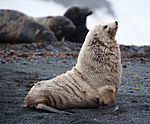 |
Arctocephalus É. Geoffroy Saint-Hilaire & F. Cuvier in F. Cuvier, 1826 |
|
 |
Callorhinus Gray, 1859 |
|
What Do Fur Seals Look Like?
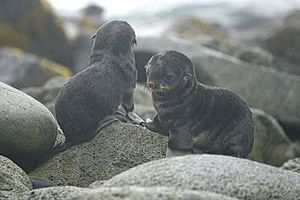
Fur seals have thick underfur, which helps keep them warm. They also have external ears, long whiskers (vibrissae), and strong, muscular flippers. Unlike true seals, fur seals can rotate their back flippers forward. This allows them to stand and walk on land. In the water, their front flippers act like paddles, helping them swim quickly. These front flippers are long, leathery, and have small claws. Fur seals have a head shape similar to a dog's, with sharp teeth, good eyesight, and excellent hearing.
Male and female fur seals look very different from each other. This is called sexual dimorphism. Males are often two to five times larger than females. They also have bigger heads, necks, and chests. The smallest fur seal is the male Galapagos fur seal, which is about 1.5 meters long and weighs 64 kg. The largest is the adult male New Zealand fur seal, which can be 2.5 meters long and weigh 180 kg.
Most fur seal pups are born with a black-brown coat. After about 2 to 3 months, they shed this coat. Then, a brown coat appears, which usually gets darker as they get older. Sometimes, males and females of the same species have very different appearances. For example, female and young South American fur seals often have lighter fur, especially on their chests. Northern fur seal females are typically silvery-gray on their backs and reddish-brown on their bellies. They also have a light gray patch on their chest. This makes them easy to tell apart from males, who have brownish-gray to reddish-brown or black coats.
Where Do Fur Seals Live?
Eight of the nine fur seal species live in the Southern Hemisphere. Only one, the northern fur seal, lives in the Northern Hemisphere. Southern fur seals include the Antarctic, Galapagos, Guadalupe, Juan Fernandez, New Zealand, brown, South American, and subantarctic fur seals. They spend about 70% of their lives in subpolar, temperate, and equatorial waters.
You can find colonies of fur seals along the coasts of southern Australia, Africa, New Zealand, Peru, and as far north as California. Most fur seals do not migrate, meaning they don't travel long distances. However, the northern fur seal is an exception, known to travel up to 10,000 km. Fur seals often live near isolated islands or peninsulas. They also come onto the mainland during winter. Even though they don't usually migrate, they might wander hundreds of miles from their breeding grounds if food becomes scarce. For example, subantarctic fur seals usually live near islands in the South Atlantic and Indian Oceans. But young males have been seen as far north as Brazil and South Africa.
Fur Seal Life and Habits
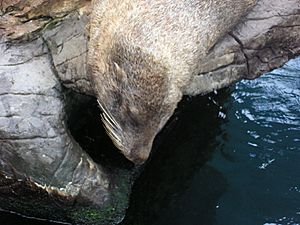
During the summer, fur seals gather in large groups called rookeries. They meet on specific beaches or rocky areas to give birth and breed. All fur seal species are polygynous. This means that dominant males mate with more than one female. For most species, pregnancy lasts about 11.5 months. This includes a period where the embryo's development is paused, called delayed implantation. Northern fur seal males fiercely protect the females in their groups, called harems. Females usually become old enough to reproduce around 3 to 4 years of age. Males reach sexual maturity around the same time, but they don't become territorial or mate until they are 6 to 10 years old.
How Do Fur Seals Reproduce?
The breeding season typically starts in November and lasts for 2 to 3 months. Northern fur seals begin their breeding season earlier, in June, because of their region's climate and resources. In all cases, males arrive a few weeks early. They fight to claim their territory and groups of females. They gather at rocky, isolated breeding grounds. They defend their territory by fighting and making loud noises. Males usually stay in their territory for the entire breeding season. They fast during this time, using up all their energy.
Juan Fernandez fur seals are a bit different. They use aquatic breeding territories, which is unusual for fur seals. They still use rocky sites for breeding, but males fight for territory both on land and in the water. When females arrive at the breeding grounds, they give birth to pups from the previous season. About a week later, the females mate again. Soon after, they start their feeding cycle. This usually involves foraging and feeding at sea for about 5 days. Then, they return to the breeding grounds to nurse their pups for about 2 days. Mothers and pups find each other by recognizing each other's calls during nursing. The Juan Fernandez fur seal has a very long feeding cycle, with about 12 days of foraging and 5 days of nursing. Most fur seals continue this cycle for about 9 months until they stop nursing their pups. The Antarctic fur seal is an exception, with a feeding cycle that lasts only 4 months. During foraging trips, most female fur seals travel around 200 km from their breeding site. They can dive about 200 meters deep, depending on where they find food.
What Do Fur Seals Eat?
For the rest of the year, fur seals live mostly in the open sea. This is called a pelagic existence. They follow their prey wherever it is plentiful. They mainly eat medium-sized fish, squid, and krill. Some southern fur seal species also eat seabirds, especially penguins. Fur seals, in turn, are hunted by sharks, orcas, and sometimes by larger sea lions. These clever mammals tend to feed and dive in shallow waters at night. This is when their prey swim closer to the surface. South American fur seals have a different diet. Adults eat almost only anchovies, while young ones eat fish that live near the seabed. This is likely because of what food is available to them.
In the past, when fur seals were hunted in the late 1700s and early 1800s, they would come ashore on remote islands. There were no predators there. Hunters found it easy to catch the animals, making the hunt profitable even though the price for each seal skin was low.
Fur Seal Survival and Threats
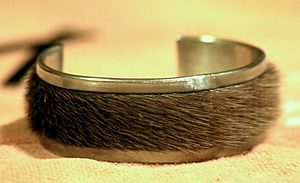
The average lifespan of fur seals varies from 13 to 25 years, depending on the species. Females usually live longer than males. Many fur seal populations are growing. They are recovering from past commercial hunting and environmental challenges.
Many species were heavily hunted, especially in the 19th century, because their fur was very valuable. Starting in the 1790s, ports like Stonington and New Haven, Connecticut, were leaders in the American fur seal trade. This trade involved hunting fur seals on uninhabited South Pacific islands and selling their hides in China. Many populations, such as the Guadalupe fur seal, northern fur seal, and Cape fur seal, saw huge drops in numbers. They are still recovering today.
Currently, most fur seal species are protected. Hunting is mostly limited to small-scale hunting for survival by local communities. Globally, most populations are considered healthy. This is mainly because they often prefer remote places that are hard for humans to reach. However, environmental degradation (damage to their environment), competition with fisheries (fishing for the same food), and climate change could still pose threats to some fur seal populations.
See also
 In Spanish: Osos marinos para niños
In Spanish: Osos marinos para niños


